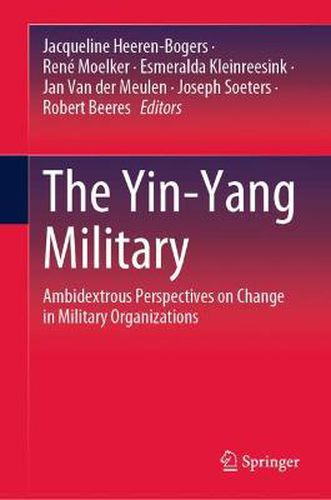Readings Newsletter
Become a Readings Member to make your shopping experience even easier.
Sign in or sign up for free!
You’re not far away from qualifying for FREE standard shipping within Australia
You’ve qualified for FREE standard shipping within Australia
The cart is loading…






This title is printed to order. This book may have been self-published. If so, we cannot guarantee the quality of the content. In the main most books will have gone through the editing process however some may not. We therefore suggest that you be aware of this before ordering this book. If in doubt check either the author or publisher’s details as we are unable to accept any returns unless they are faulty. Please contact us if you have any questions.
This book examines change processes and the challenge of ambidexterity in military organizations. It discusses how military organizations can better adapt to the complex, and at times chaotic, environments they operate in by developing organizational ambidexterity. The authors identify various multiple tasks and functions of military organizations that require multi-dimensional and often contradictory operational, technological, cultural, and social skills. In analogy to the often-opposed functions performed by the right and left hand of the body, modern military organizations are no longer one-dimensional fighting machines, but characterized by a duality of tasks, such as fighting and peacekeeping which often make part and parcel of one and the same mission. The military is both a hot and a cold organization (a crisis management organization and a bureaucracy). As such, the book argues that these dualities are not necessarily opposed but can serve as complementary forces, like the yin and yang, to better the overall performance of these organizations. As a consequence, ambidextrous organizations excel at complex tasking and are adaptable to new challenges. Divided into four parts: 1) structures and networks; 2) cultural issues; 3) tasks and roles; 4) nations and allies, it appeals to scholars of military studies and organization studies as well as professionals working for governmental or military organizations.
$9.00 standard shipping within Australia
FREE standard shipping within Australia for orders over $100.00
Express & International shipping calculated at checkout
This title is printed to order. This book may have been self-published. If so, we cannot guarantee the quality of the content. In the main most books will have gone through the editing process however some may not. We therefore suggest that you be aware of this before ordering this book. If in doubt check either the author or publisher’s details as we are unable to accept any returns unless they are faulty. Please contact us if you have any questions.
This book examines change processes and the challenge of ambidexterity in military organizations. It discusses how military organizations can better adapt to the complex, and at times chaotic, environments they operate in by developing organizational ambidexterity. The authors identify various multiple tasks and functions of military organizations that require multi-dimensional and often contradictory operational, technological, cultural, and social skills. In analogy to the often-opposed functions performed by the right and left hand of the body, modern military organizations are no longer one-dimensional fighting machines, but characterized by a duality of tasks, such as fighting and peacekeeping which often make part and parcel of one and the same mission. The military is both a hot and a cold organization (a crisis management organization and a bureaucracy). As such, the book argues that these dualities are not necessarily opposed but can serve as complementary forces, like the yin and yang, to better the overall performance of these organizations. As a consequence, ambidextrous organizations excel at complex tasking and are adaptable to new challenges. Divided into four parts: 1) structures and networks; 2) cultural issues; 3) tasks and roles; 4) nations and allies, it appeals to scholars of military studies and organization studies as well as professionals working for governmental or military organizations.